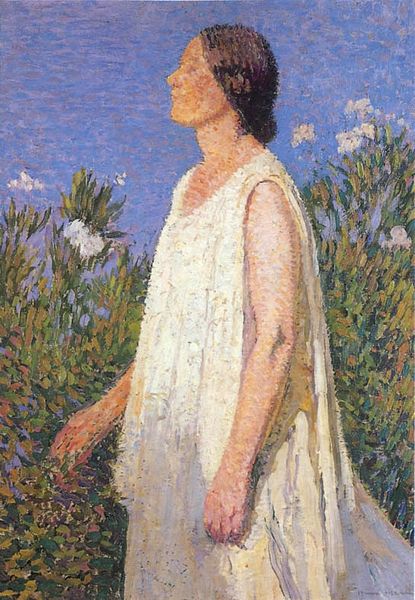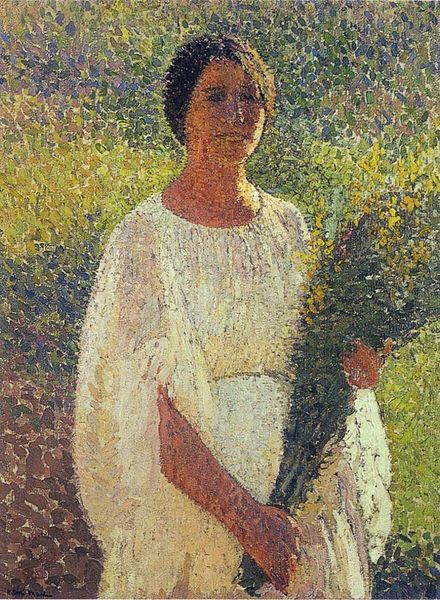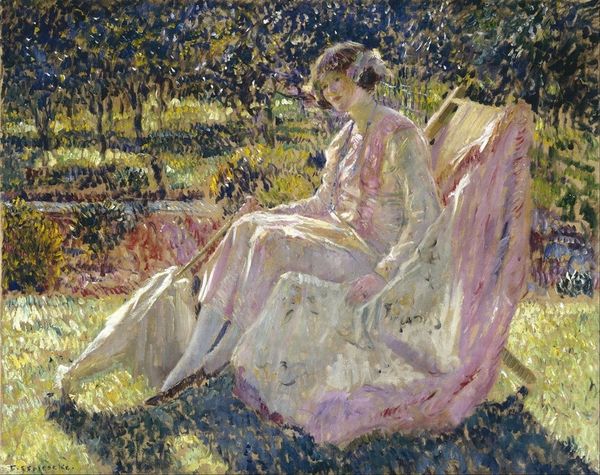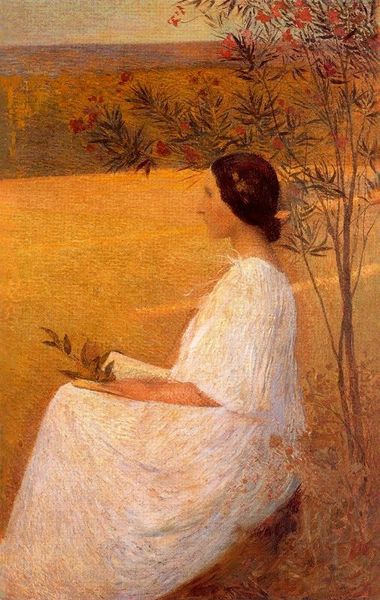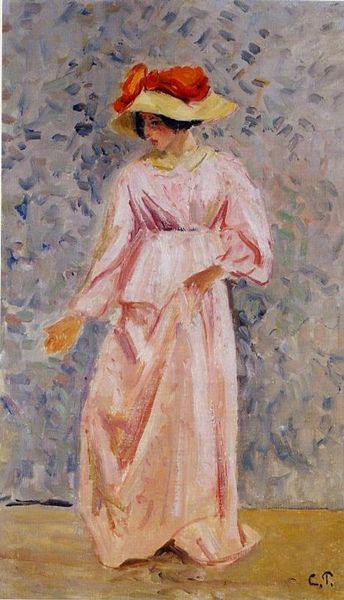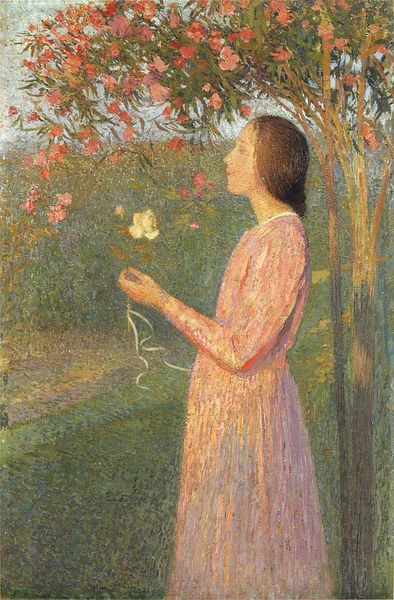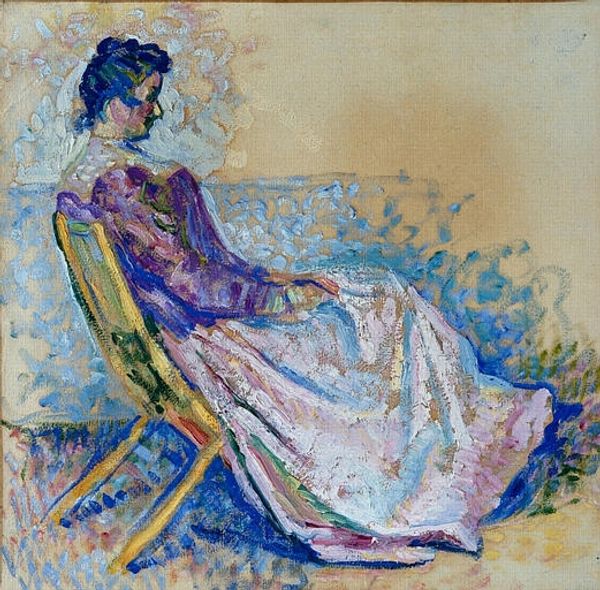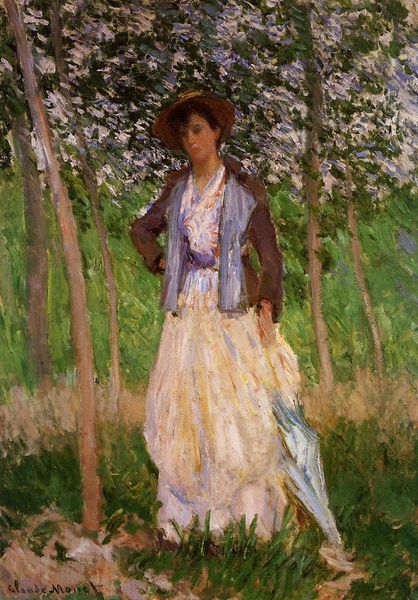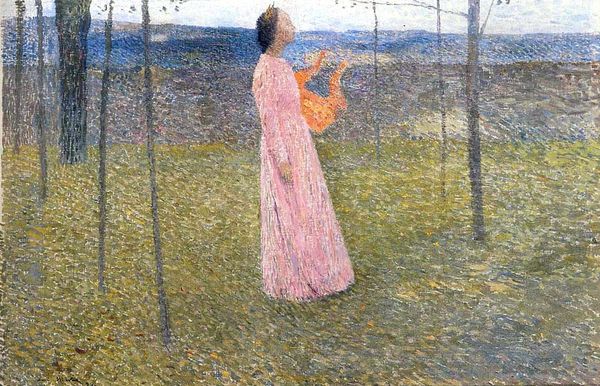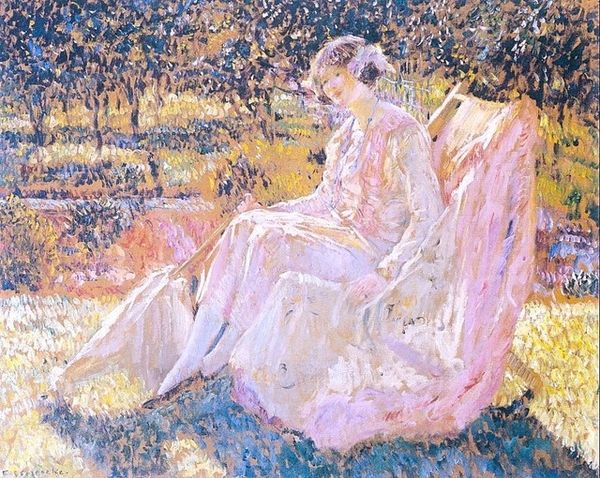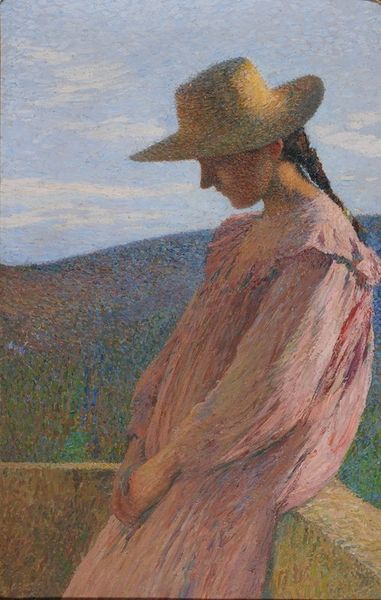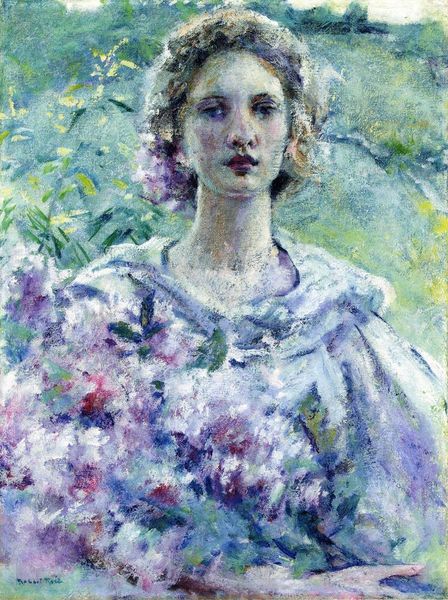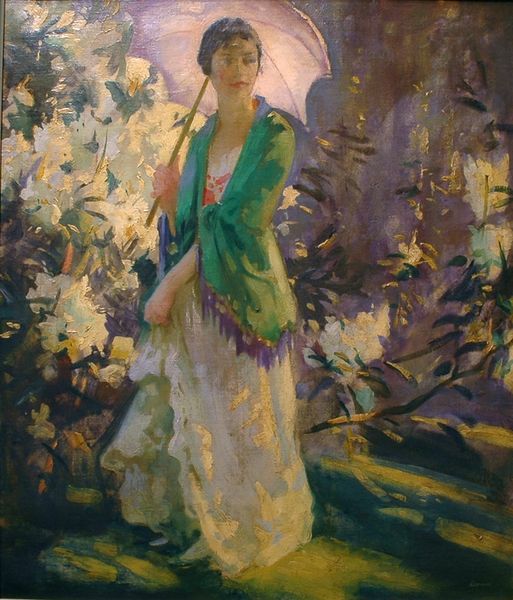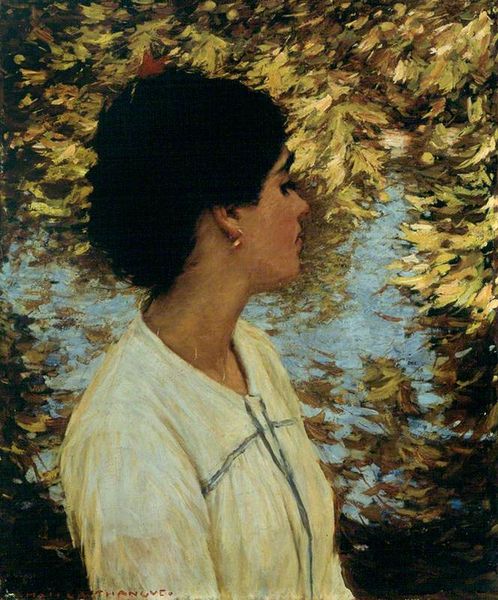
painting, plein-air, oil-paint
#
portrait
#
painting
#
impressionism
#
plein-air
#
oil-paint
#
landscape
#
oil painting
#
post-impressionism
Copyright: Public domain
Editor: Here we have Henri Martin’s oil painting, "The Muse." The vibrant colours, applied in these tiny little dots, create a sense of shimmering light. The woman depicted, with her serene gaze, seems entirely at peace. What's your interpretation of this work, and the way Martin uses the plein-air technique? Curator: It's tempting, isn't it, to lose ourselves in the details – the confetti of color! I imagine Martin, outdoors, his senses utterly flooded by this pastoral scene. She could be just sitting there... Or maybe this is Mnemosyne herself, a wellspring of poetic inspiration, sprung to life amid the trees. How do you interpret her stillness, framed against the vitality of the landscape? Editor: That's a lovely idea. To me, her stillness amplifies the vitality; it's like she's absorbing it, a silent witness. I guess, beyond the visual beauty, there’s this quiet hum of connection with nature. Curator: Exactly! I wonder if Martin felt that same connection – that art could flow *through* the artist rather than just *from* them? I imagine this woman is every woman, channeling an otherworldly creativity in that particular moment, under that spring sun. It is really an exquisite plein-air painting of time and feeling. Don't you agree? Editor: I do! It’s lovely to think about it that way. It makes the painting feel more personal, almost like I am present in it myself. Thanks for your insights, I will go look up more on Mnemosyne.
Comments
No comments
Be the first to comment and join the conversation on the ultimate creative platform.
